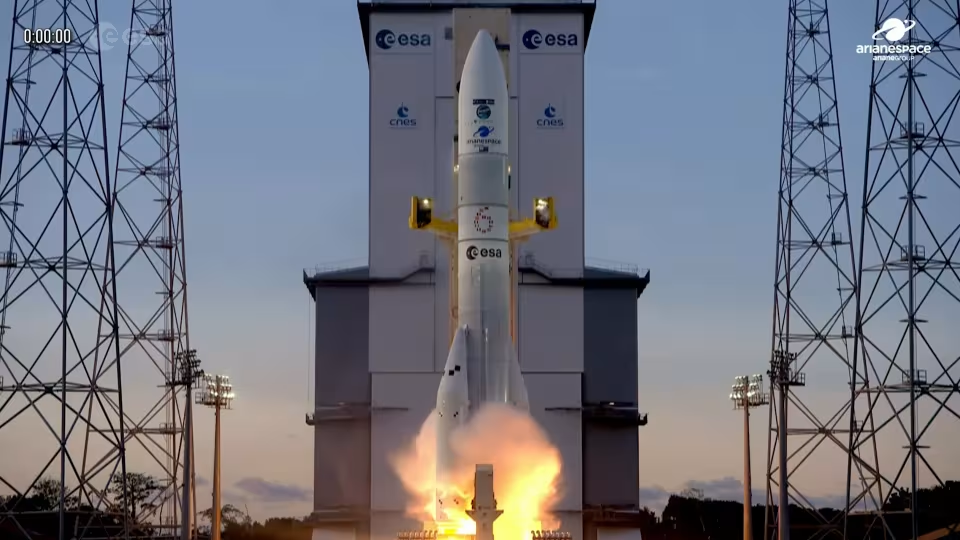Sentinel-1D launched by Ariane 6

The Copernicus Sentinel-1D satellite has joined the Sentinel-1 mission in orbit. Launch took place on 4 November 2025 at 22:03 CET (18:03 local time) on board an Ariane 6 launcher from Europe’s Spaceport in French Guiana.
The Sentinel-1 mission delivers high-resolution radar images of Earth’s surface, performing in all weathers, day-and-night. This service is used by disaster response teams, environmental agencies, maritime authorities and climate scientists, who depend on frequent updates of critical data.
The new satellite is a radar satellite like are the Finnish ICEYE's satellites, but they have differencies. Sentinel-1 uses a larger and more powerful radar with the so-called C-band (5.405 GHz), which is less sensitive to weather conditions and better at revealing vegetation and subsurface features. ICEYE uses the so-called X-band (9.65 GHz), which produces sharper images: they can detect objects as small as under 25 cm, while Sentinel-1's image resolution is a few meters at best. Both have their strengths and weaknesses.
A key difference is that ICEYE's satellites have a shorter lifespan and are more prone to failure, whereas Sentinel-1 is designed to be highly reliable and long-lasting. On the other hand, ICEYE has dozens of satellites in space, while there are only two operational Sentinel-1 satellites. While ICEYE can observe the same location on Earth's surface multiple times a day, a Sentinel-1 overpass may require waiting for days. The large number of satellites also enhances the reliability of ICEYE's entire constellation.
The EU's Copernicus program, of which Sentinel-1 is just one part, provides freely available data—data that ICEYE also uses in combination with its own collected data.
The Finnish DA-Group has made a significant contribution to the Sentinel-1 satellites by delivering key subsystems and instruments as a subcontrator to Airbus Defence and Space UK, Airbus DS GmbH and OHB.
The following systems are Made in Finland:
- Transmit Gain Unit (a dual redundant, highly stable pulsed power amplifier used to provide the transmit signal power to feed the active transmit antenna array)
- Mission Dependent Filter Equipment (accurately defines the radar transmit and receive bandwidths, avoiding external interference)
- RF Distribution Network (a transmitting divider and receiving combiner trees providing signal coupling between the radar electronics and the antenna radiating elements.
- SES RF Harness

Sentinel-1D will work in tandem with Sentinel-1C, flying in the same orbit but 180° apart, to optimise global coverage and data delivery. Both satellites have a C-band synthetic aperture radar (SAR) instrument on board, which captures high-resolution imagery of Earth’s surface.
They are also equipped with Automatic Identification System (AIS) instruments to improve detection and tracking of ships. When Sentinel-1D is fully operational, it will enable more frequent AIS observations, including data on vessel identity, location and direction of passage, enabling precise tracking.
Sentinel-1D was launched on Europe’s heavy-lift rocket Ariane 6 on flight designated VA265. This was already 4th launch of Ariane 6.
